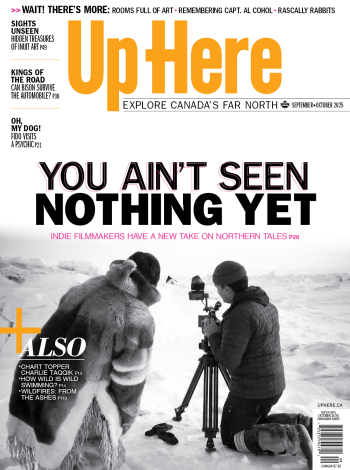“Most people think it’s fake,” says Andrew Umbrich, owner and operator of Takhini Hot Pools, the company that until recently ran the Takhini Hot Springs Freezing Hair Contest near Whitehorse. “A lot of people who live in warmer countries who don’t have real winter tend to think it’s fake.”
Or that it’s dangerous.
“They think we’re crazy Canadians breaking our hair in an ice hole and freezing water.”
It’s perfectly real, of course. And safe. Otherwise the contest—which runs for six months on days when the temperature is at least minus 20—wouldn’t exist.
All contestants need for a basic frosted ’do is a dip in the hot springs. When you resurface, any hair—whether it’s on your head, face, or body—will slowly turn white. Rather than a flash freeze, the hair is solidified by a frost layer so light it almost immediately melts when contestants go inside. Because of this, it actually takes a long time to sculpt a winning hairdo, sometimes requiring hours and some extra helping hands.
But there are worse fates than needing a few more minutes in a 42-degree hot spring, which speaks to the Freezing Hair Contest’s unique advantage, says Umbrich.
“There aren’t actually many hot springs in the world this high up north that are publicly accessible,” he says. “Anyone can get their hair frozen, anywhere in the world that gets cold enough, but very few people can do it outside and comfortably.”
It’s a natural phenomenon that’s captured international attention. The contest, conceived in 2011, was a low-key affair until 2015, when a photo submission went viral. The media frenzy hasn’t died down since—from Russian hair magazines to the Asian news circuit, the Freezing Hair Contest keeps collecting headlines.
On September 26, Takhini Hot Pools closed permanently, but don’t fret—the Freezing Hair Contest and hot springs facility will soon run under a new name with a different company post-2020. The event is still set to keep up momentum and put your hairs on edge in future seasons.









